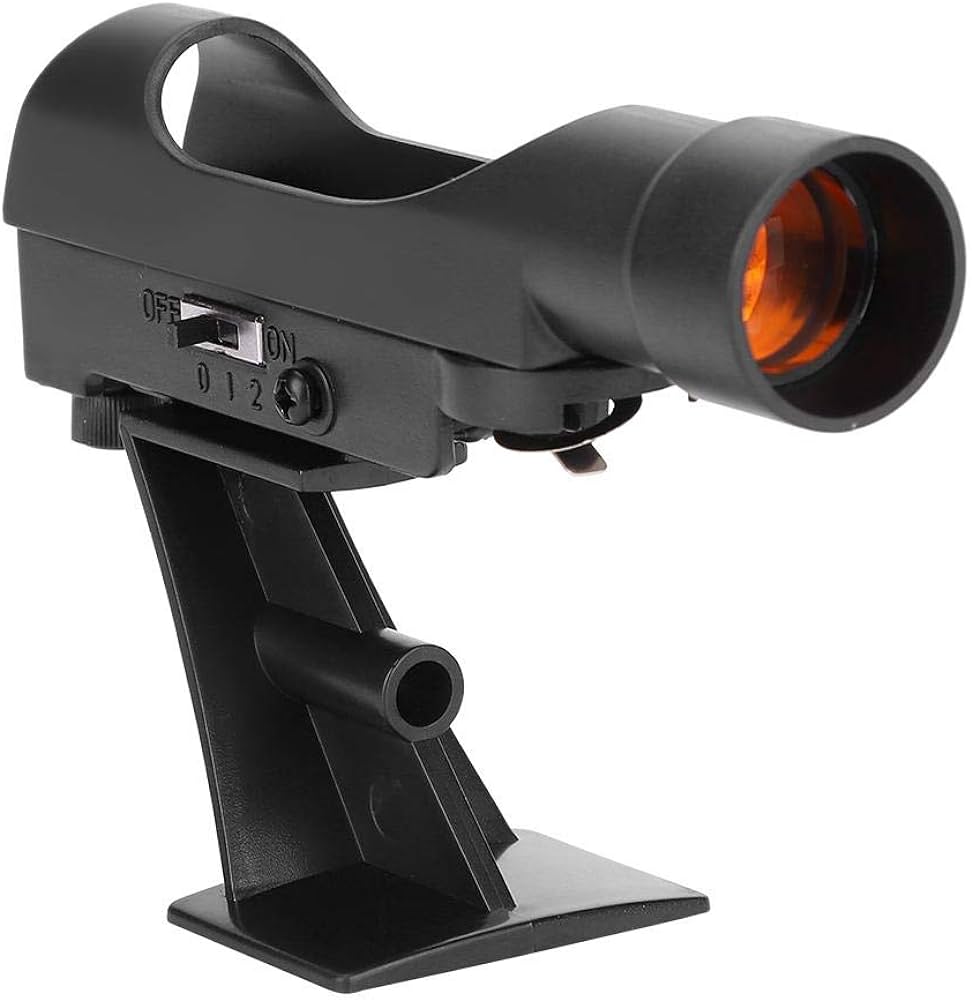Unlock the world of stargazing with this in-depth comparison of two essential telescope accessories.
If you’re an aspiring astronomer or an experienced stargazer, you know that the universe is vast and intriguing. Telescopes provide us with a window into this cosmic wonderland, but they can be challenging to use accurately. To help you navigate the night sky more effectively, two essential accessories often come to the rescue: finderscopes and red dot finders. In this comprehensive guide, we’ll dive deep into these tools, exploring their unique features, benefits, and drawbacks.
Understanding the Basics
Before we delve into the differences between finderscopes and red dot finders, let’s start by understanding what each of these accessories is and how they enhance your stargazing experience.
Finderscopes: The Traditional Guide
Finderscopes are optical devices mounted on the main telescope tube. They provide a magnified, low-power view of the night sky, allowing you to locate and align your telescope with specific celestial objects. Typically, finderscopes come in two variations: refractor finderscopes and reflector finderscopes. Both types serve the same purpose but use different optical configurations.
Red Dot Finders: A Modern Approach
On the other hand, red dot finders are a more recent addition to the world of amateur astronomy. These devices use a simple optical principle, projecting a red dot onto a transparent screen to help you point your telescope accurately. Red dot finders are known for their user-friendly design and ease of use, making them a popular choice among beginners.
Key Differences Explored
Now that we have a basic understanding of finderscopes and red dot finders, let’s dive deeper into their differences, focusing on five crucial aspects:
1. Optical Magnification vs. Reflex Sight
Finderscopes: Optical Magnification
Finderscopes offer optical magnification, which means they provide a larger and clearer image of the night sky compared to the naked eye. These magnified views make it easier to identify stars, planets, and other celestial objects. Finderscopes usually have fixed magnification levels, typically ranging from 6x to 9x, depending on the model.
Red Dot Finders: Reflex Sight
Red dot finders, on the other hand, use a reflex sight mechanism. They project a simple red dot onto a transparent screen, which is superimposed on the real night sky. This red dot acts as a target, helping you align your telescope with the desired object. Red dot finders do not provide magnification and show the sky at its natural size.
2. Field of View
Finderscopes: Limited Field of View
Finderscopes have a narrower field of view compared to red dot finders. This limited field of view can make it challenging to initially locate objects, especially if you’re searching for faint or distant targets. However, once you’ve found your target, the magnified view provided by a finderscope can make it easier to center it in the telescope’s eyepiece.
Red Dot Finders: Wider Field of View
Red dot finders offer a wider field of view, making it easier to scan the night sky and locate objects quickly. This broader perspective can be particularly advantageous when you’re exploring new areas of the sky or searching for multiple objects during a stargazing session.
3. Alignment Process
Finderscopes: Aligning the Crosshairs
To use a finderscope effectively, you need to align it with your main telescope. This process involves adjusting the finderscope’s crosshairs to match the telescope’s field of view. While this alignment can be precise, it may require some patience and practice.
Red Dot Finders: Point and Shoot
Red dot finders offer a more straightforward alignment process. You simply place the red dot over the object you want to observe, and you’re ready to go. This simplicity makes red dot finders an attractive choice for beginners who may find aligning a finderscope challenging.
4. Battery Dependency
Finderscopes: No Batteries Required
Finderscopes are typically non-electronic and do not require batteries to operate. This can be advantageous during long stargazing sessions, as you won’t need to worry about running out of power in the middle of your observation.
Red Dot Finders: Battery-Powered
Red dot finders rely on batteries to project the red dot onto the screen. While these batteries can last for many hours, it’s essential to carry spares to avoid any interruptions during your stargazing adventures.
5. Price Range
Finderscopes: Budget-Friendly Options
Finderscopes are often more budget-friendly than red dot finders. This affordability makes them an excellent choice for amateur astronomers on a tight budget or those who are just starting their stargazing journey.
Red Dot Finders: Moderate to High Prices
Red dot finders tend to be more expensive than finderscopes, primarily due to their electronic components and user-friendly design. However, the added convenience and ease of use may justify the higher price for many stargazers.
Choosing the Right Tool for You
The decision between a finderscope and a red dot finder ultimately depends on your individual preferences, experience level, and specific needs. To help you make an informed choice, consider the following factors:
1. Skill Level
If you’re a beginner, a red dot finder may be the better option due to its simplicity and ease of use. Experienced astronomers may prefer the precision and magnification offered by finderscopes.
2. Budget
Consider your budget when making a decision. Finderscopes are generally more affordable, making them a practical choice for those watching their expenses. Red dot finders, while pricier, offer added convenience.
3. Stargazing Goals
Think about your stargazing goals. If you plan to explore a wide range of celestial objects and want a quick way to locate them, a red dot finder’s wider field of view may be beneficial. If you’re focusing on detailed observations, a finderscope’s magnification could be more suitable.
4. Patience and Practice
Are you willing to invest time in aligning and practicing with a finderscope, or do you prefer a tool that gets you stargazing right away? Your patience and commitment to learning the instrument’s nuances should influence your choice.
5. Battery Considerations
If you plan on extended stargazing sessions in remote locations, the battery-dependent nature of a red dot finder may be a concern. Finderscopes, with their non-electronic design, can be a reliable choice for such situations.
Additional Considerations
1. Using Both Together
Some astronomers opt to use both a finderscope and a red dot finder simultaneously. This combination can provide the best of both worlds, allowing for quick initial alignment with the red dot finder and precise centering with the finderscope.
2. Mount Compatibility
Ensure that your telescope’s mounting system is compatible with the chosen accessory. Some telescopes may have specific mounting brackets for finderscopes or red dot finders.
Final Thoughts
In the vast and captivating world of astronomy, the choice between a finderscope and a red dot finder is a matter of personal preference and practicality. Both tools have their advantages and can significantly enhance your stargazing experience. Whether you opt for the traditional precision of a finderscope or the user-friendly simplicity of a red dot finder, what matters most is that you continue to explore the mysteries of the universe and deepen your connection with the cosmos.
Explore the night sky with confidence, armed with the knowledge of these essential telescope accessories. Remember, whether you’re aligning a finderscope or aiming for the red dot, the universe is waiting to reveal its secrets to those who look up and wonder.
Discover more about the fascinating world of astronomy and telescope accessories:
- Astronomy Magazine: Stay updated with the latest news and discoveries in the world of astronomy.
- Sky & Telescope: A trusted resource for stargazers, offering tips, reviews, and guides on astronomy equipment.
- Telescope.com: Explore a wide range of telescopes, finderscopes, and red dot finders to suit your stargazing needs.
- Stellarium: Download this free planetarium software to help you identify and locate celestial objects in the night sky.
- Astronomy for Beginners: How to Get Started: If you’re new to astronomy, this guide is a great starting point to embark on your stargazing journey.
Happy stargazing!

